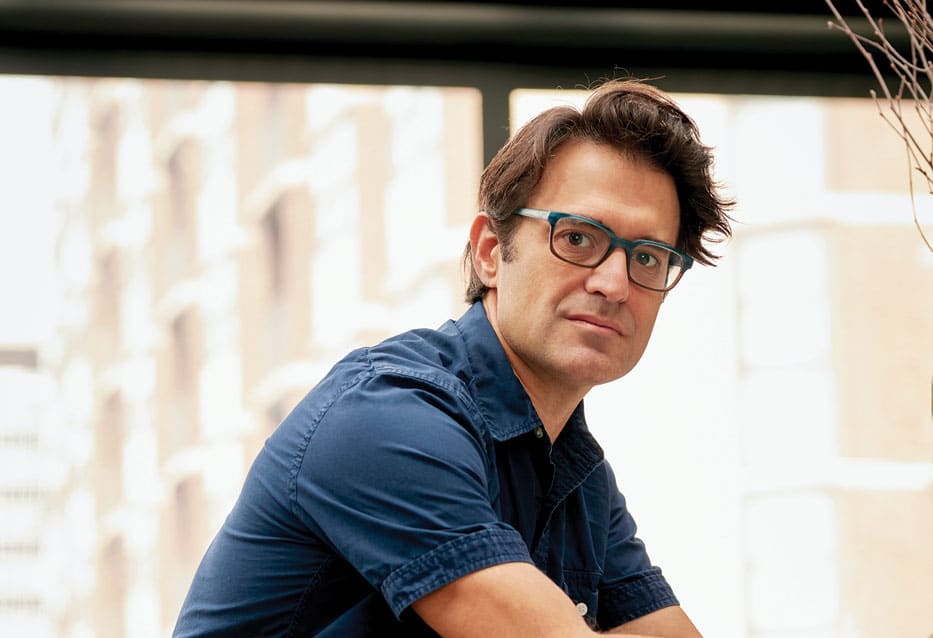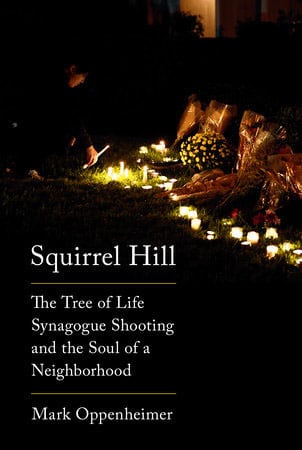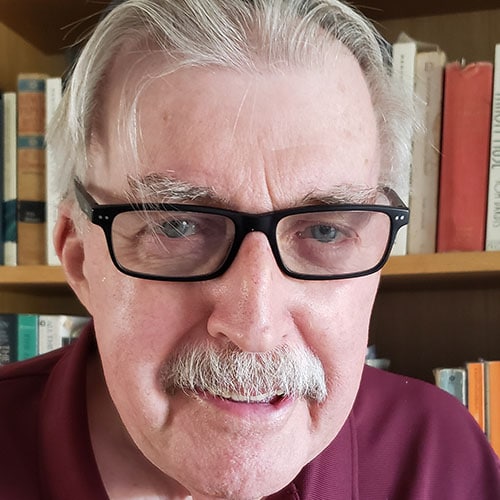 Photo courtesy of Mark Oppenheimer
Photo courtesy of Mark Oppenheimer Mark Oppenheimer, an accomplished journalist and former New York Times religion columnist, reacted promptly when he heard about the Shabbat morning massacre three years ago this month that wiped out 11 Jews and injured six persons at the Tree of Life synagogue.
As host of “Unorthodox” for Tablet Magazine, the No. 1-rated Jewish-themed podcast in English, he dispatched a crew to Squirrel Hill, home of Tree of Life, for direct coverage.
Shortly afterward, Oppenheimer, 47, who is Connecticut-based, launched the first of his 32 trips – 450 miles one way — to the crime scene.
“I wanted to know everything about how the neighborhood was reacting.”
— Mark Oppenheimer
“I wanted to know everything about how the neighborhood was reacting,” he told the Journal.
 Now, Oppenheimer has written “Squirrel Hill: The Tree of Life Synagogue Shooting and the Soul of a Neighborhood,” scheduled to be released October 5. For his book, the author talked to people of all different backgrounds, from religious to secular Jews, non-Jews, witnesses, survivors, shopkeepers, activists, historians and just about anyone in the community. “I wanted a portrait of the whole neighborhood,” he said.
Now, Oppenheimer has written “Squirrel Hill: The Tree of Life Synagogue Shooting and the Soul of a Neighborhood,” scheduled to be released October 5. For his book, the author talked to people of all different backgrounds, from religious to secular Jews, non-Jews, witnesses, survivors, shopkeepers, activists, historians and just about anyone in the community. “I wanted a portrait of the whole neighborhood,” he said.
Oppenheimer will be presenting “Squirrel Hill” twice in Los Angeles: first, in an October 5 webinar interview with Rabbi Sherre Hirsch, chief innovation officer of American Jewish University (AJU), and in person on October 12 for an interview with Rabbi David Wolpe of Sinai Temple and journalist Bari Weiss, who was an op-ed staff editor and writer at the New York Times.
“The story of Squirrel Hill compels us to remember that dark hatred knows no boundaries. It can even breach a place of worship, a sanctuary of peace.”
– Rabbi Sherre Hirsch
Hirsch said, “As we approach the third anniversary of this horrific tragedy, we had an opportunity to honor the memory of the 11 Jewish people who were murdered and learn about the resilience of the Squirrel Hill community. The story of Squirrel Hill compels us to remember that dark hatred knows no boundaries. It can even breach a place of worship, a sanctuary of peace.”
Oppenheimer, a lecturer in English at his alma mater, Yale University, writes for The New York Times Magazine and other well-known publications in addition to churning out books.
While Oppenheimer grew up in Massachusetts, his family dates back five generations in the east side Squirrel Hill neighborhood that is home to one-third of Pittsburgh’s almost 50,000 Jews. None of his family, however, was affiliated with Tree of Life. Described as historically Conservative, it has been shuttered, temporarily, since Oct. 27, 2018, the date of the tragedy.
An architect who worked on Ground Zero is developing a recovery plan for Tree of Life. Robert Bowers, the 51-year-old white nationalist charged in the Tree of Life case, remains in prison, awaiting trial.
One discovery that surprised Oppenheimer when he was working on his book was how locals have moved on from the tragedy. “I was taken aback by how quickly some people forget,” Oppenheimer said.
They apparently have been numbed by the increasing frequency of mass tragedies. “[There have been] so many, so many killings,” he said.
According to the FBI, the killing of four or more at one time qualifies as a mass killing. Research into the number of mass killings in recent years can be a moving target, depending on the source. Reuters reports that at least 2,000 people have been killed or injured in mass shootings since 1999, when 13 students were murdered at Columbine High School in Colorado.
“Very few mass shootings have targeted houses of worship,” Oppenheimer said, adding that killers have aimed at malls and immigrants.
Oppenheimer’s most unexpected finding, he said, was that Squirrel Hill residents are the second-, third- or even fourth-generations to live there.
“People come and can’t seem to leave. Or they leave and then come back to raise their families.”
After 32 visits to Squirrel Hill, the journalist-educator found one significant change: “I think people are more cognizant than ever of how important the bonds of neighborhood are.”























 More news and opinions than at a Shabbat dinner, right in your inbox.
More news and opinions than at a Shabbat dinner, right in your inbox.